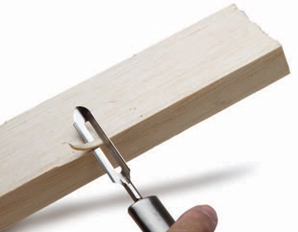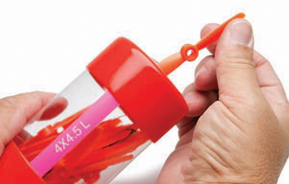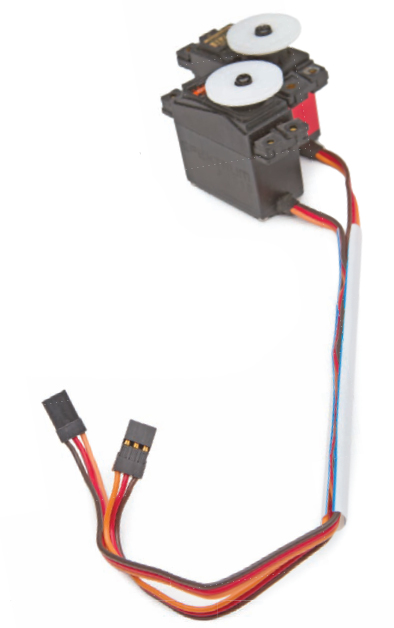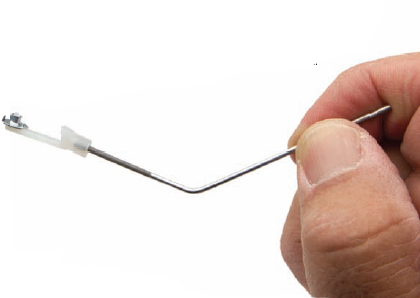GSNadmin
Staff member
Who doesn’t like turning an ordinary household item into a useful tool? These tips all use items around the house or shop, so they won’t cost you a dime. Have another use for a common product? Send your tip to MAN@airage.com and you could win an assortment of Bob Smith Industries glue (plus worldwide accolades & fame, of course!).
HANDY CARVER

Do you have to carve some balsa, but you’ve lost or misplaced your razor plane and the hobby shop is closed? Here’s an alternative that’s as near as the gadget drawer in your kitchen: a vegetable peeler! This handy tool works great to carve leading edges, turtle decks, and other areas where you need to remove balsa quickly and easily. Don’t let your wife in on the secret or you’ll be peeling potatoes!
PROP-ER STORAGE

Over time, most modelers wind up with a collection of propellers that usually end up stored in a box. To retrieve one, you have to rummage through the entire box. Here’s a clever idea: Use some screw storage tubes, which you can purchase at your local hardware store. Available in a number of sizes, these plastic tubes have clear sides and rubber ends that grip tight. One of the ends has a slit that can be opened when squeezed. Load your props in a tube and then label it. You can then dispense the props
NEATNESS COUNTS!

Whenever you have to run servo wires or extensions in your model or field box, there is always a chance that they can end up a tangled mess. An excellent way of keeping them untangled or held in place is by enclosing them in a rigid conduit. A plastic straw with a slit cut along its length is a great conduit for the servo wires. Just press the wire into the straw along the slit; the slit snaps back into shape, and presto… you have a nice straight run of wires. To remove a wire, just pull it back out through the slit. The straw can be left loose or spot-glued to the fuselage to hold a fixed position.
REACHING OUT

Need a simple, inexpensive tool to install a nut in a hard-to-reach place? Take a length of 2-56 rod that’s threaded on one end, and attach a plastic or nylon clevis. Remove the part of the clevis without the pin, and you’ll have a small “finger” that will hold a nut or blind nut. You can bend the rod to almost any shape to get the nut where needed.
Model Airplane News - The #1 resource for RC plane and helicopter enthusiasts featuring news, videos, product releases and tech tips.
Continue reading...
HANDY CARVER

Do you have to carve some balsa, but you’ve lost or misplaced your razor plane and the hobby shop is closed? Here’s an alternative that’s as near as the gadget drawer in your kitchen: a vegetable peeler! This handy tool works great to carve leading edges, turtle decks, and other areas where you need to remove balsa quickly and easily. Don’t let your wife in on the secret or you’ll be peeling potatoes!
PROP-ER STORAGE

Over time, most modelers wind up with a collection of propellers that usually end up stored in a box. To retrieve one, you have to rummage through the entire box. Here’s a clever idea: Use some screw storage tubes, which you can purchase at your local hardware store. Available in a number of sizes, these plastic tubes have clear sides and rubber ends that grip tight. One of the ends has a slit that can be opened when squeezed. Load your props in a tube and then label it. You can then dispense the props
NEATNESS COUNTS!

Whenever you have to run servo wires or extensions in your model or field box, there is always a chance that they can end up a tangled mess. An excellent way of keeping them untangled or held in place is by enclosing them in a rigid conduit. A plastic straw with a slit cut along its length is a great conduit for the servo wires. Just press the wire into the straw along the slit; the slit snaps back into shape, and presto… you have a nice straight run of wires. To remove a wire, just pull it back out through the slit. The straw can be left loose or spot-glued to the fuselage to hold a fixed position.
REACHING OUT

Need a simple, inexpensive tool to install a nut in a hard-to-reach place? Take a length of 2-56 rod that’s threaded on one end, and attach a plastic or nylon clevis. Remove the part of the clevis without the pin, and you’ll have a small “finger” that will hold a nut or blind nut. You can bend the rod to almost any shape to get the nut where needed.
Model Airplane News - The #1 resource for RC plane and helicopter enthusiasts featuring news, videos, product releases and tech tips.
Continue reading...
